SMASHED COLLARBONES: Berlin Art Week 2022
The art world is often ugly and unkind. While the objects of desire are historically and philosophically deemed as beautiful, to see (more) beauty, we need to surrender sardonically and indulge in social ugliness to attain beauty. The column of 032c’s editor Claire Koron Elat is a cerebral, and sometimes visceral, field trip to galleries, institutions, fairs, and other art events, pointing out how “enlightenments” and behaviorisms occurring there are reflections and predictions of culture at large.
“Imagine being compelled to smash your own collarbone, with a brick.”
– Ed Atkins, Sorcerer (2022)
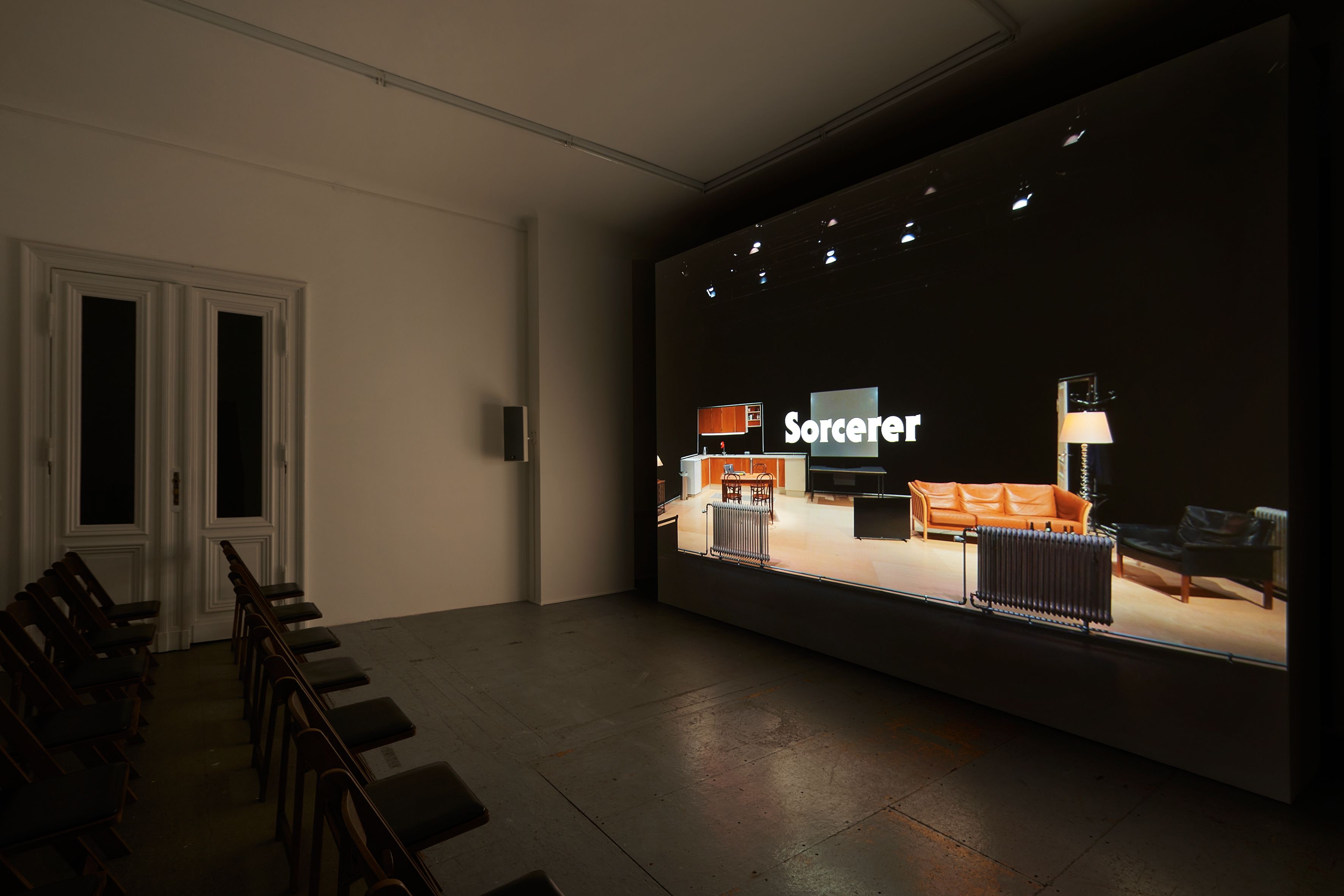
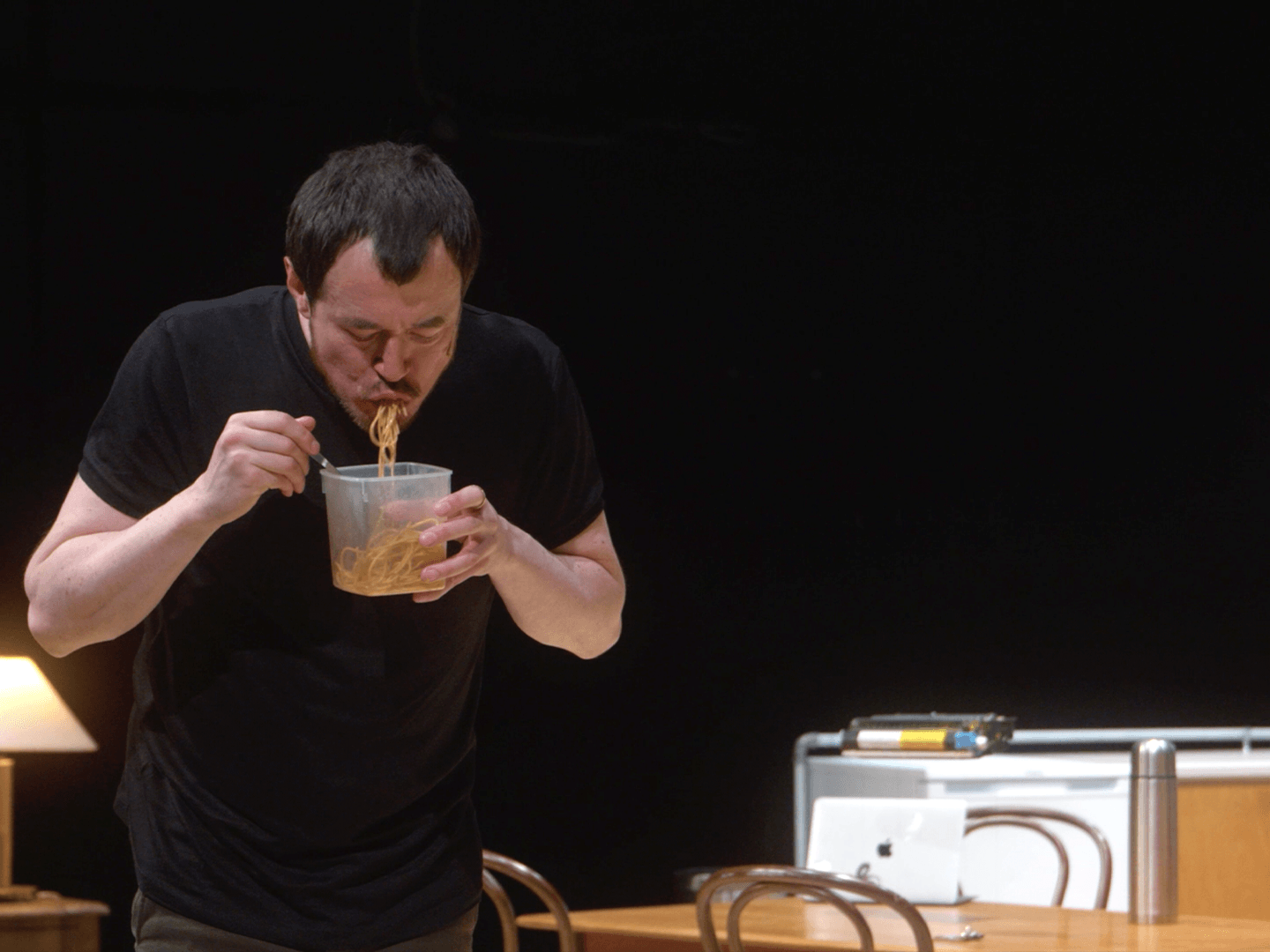
Your collarbone is among the most painful bones to break. Not necessarily because of the pain level, like with any broken bone, but because of the lengthy recovery time. Breaking bones takes time, and smashing your collarbone bestows you with time. Time that is suddenly gifted to you due to unfortunate circumstances.
If you were compelled to smash your collarbone during Berlin Art Week 2022, it might have prevented you from getting thrown into the art show, artist talk, dinner party, after party, after-after party pipeline. You would have been forced into an immobile state, where pain follows every single movement.
In Ed Atkins’s new play Sorcerer, screened as a video at Isabella Bortolozzi’s off-space Eden Eden, one protagonist dares to utter this forbidden thought of self-harm, a conception one should never speak aloud. In his two solo shows at Bortolozzi and Eden Eden respectively, Atkins displays the pleasures of being both together and alone. Sorcerer, written by Atkins and Steven Zultanski, is situated in a post-pandemic, mahogany-colored world. Here, a boomer and two late-aged millennials ruminate the smashing of their collarbones and discuss synonyms for the act of sucking out eyeballs. In the room next to the screening, there is a minimalist bed with a wooden frame and white duvets. The duvets breathe rhythmically, moving up and down as if someone were lying underneath them. However, the bed itself is empty, like someone slurped out the bed’s viscera — its muscle memory still alive.
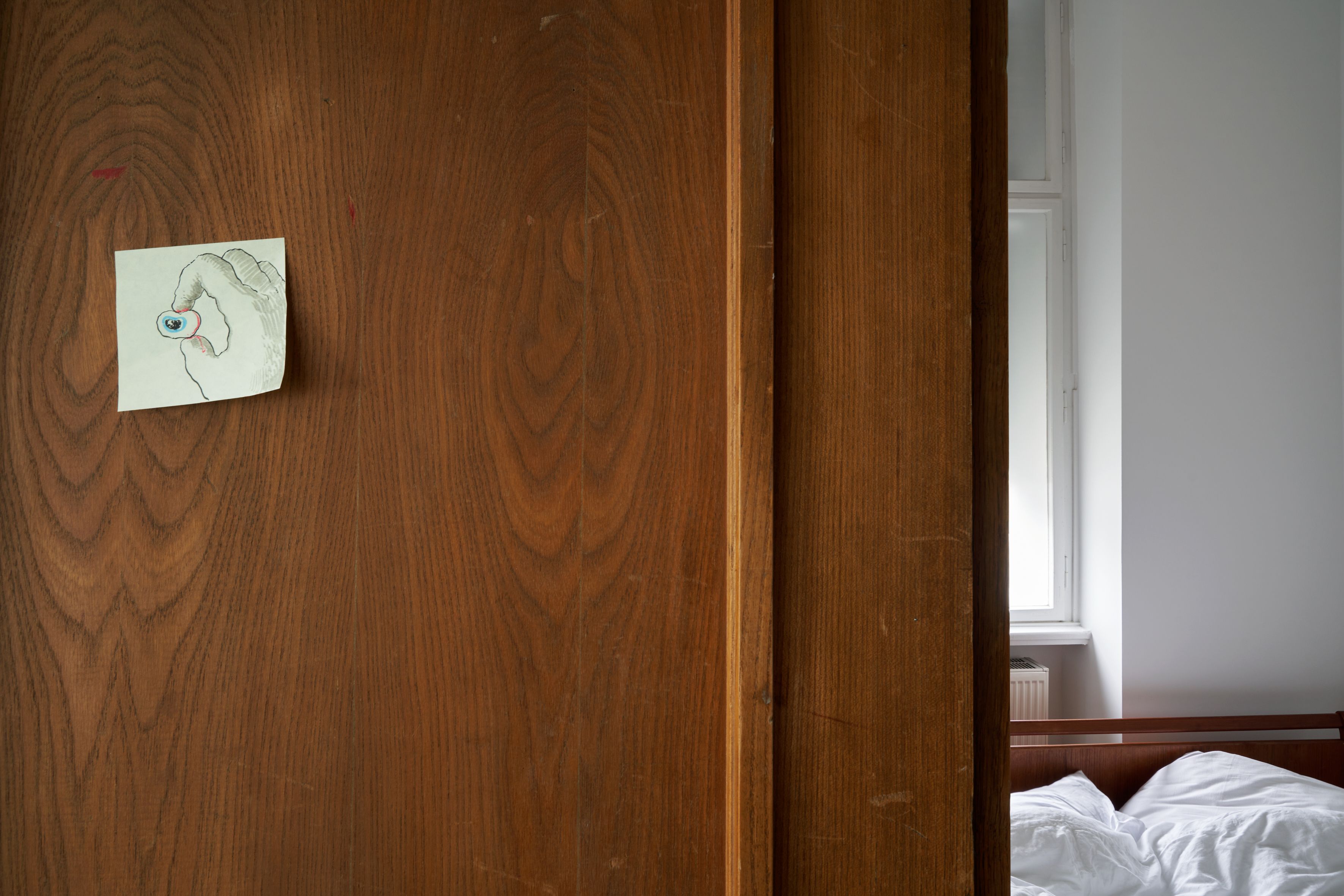
The three characters in Sorcerer discuss bizarrely mundane topics that allude to Atkins’s practice, where words and ideas are aspirated until they are rendered crinkly empty shells. In a conversation between Atkins, Zultanski, and Frieze’s Andrew Durbin, the latter describes the play as worrying and anxiety-inducing. I would say it's creepy and awkward also.
Throughout the conversation, the millennial woman is eagerly concerned with methodically sucking the flesh out of green grapes. She pursues an ASMR-esque eating method that amplifies every millisecond of a smack or slurp. Unless you have a fetish for people ingesting fruit, it is unbearable to watch. She eats awkwardly — slobbering a single grape as if it was a slushie, and then quickly devouring it as a whole — to the point where it just makes you cringe. It gives you the kind of goosebumps that make you want to leave the room and crawl under a duvet.
Eagerly awaiting the first edition of Art Basel Paris+, Berlin decided to organize a fair once again. Situated in the former Tempelhof Airport, Positions Berlin Art Fair gathered 88 galleries — most of them I have never heard of. A second “fair” took place at Kühlhaus Berlin, aptly titled “The Fairest”; it intends to be a new fair art fair model. How “The Fairest” exactly differs from any group exhibition remains unknown. Berlin just doesn’t seem to be the place to be for fairs. Sometimes you simply have to accept your irrelevance for certain things — a fashionable thought, as Berlin Fashion Week took place a week prior.
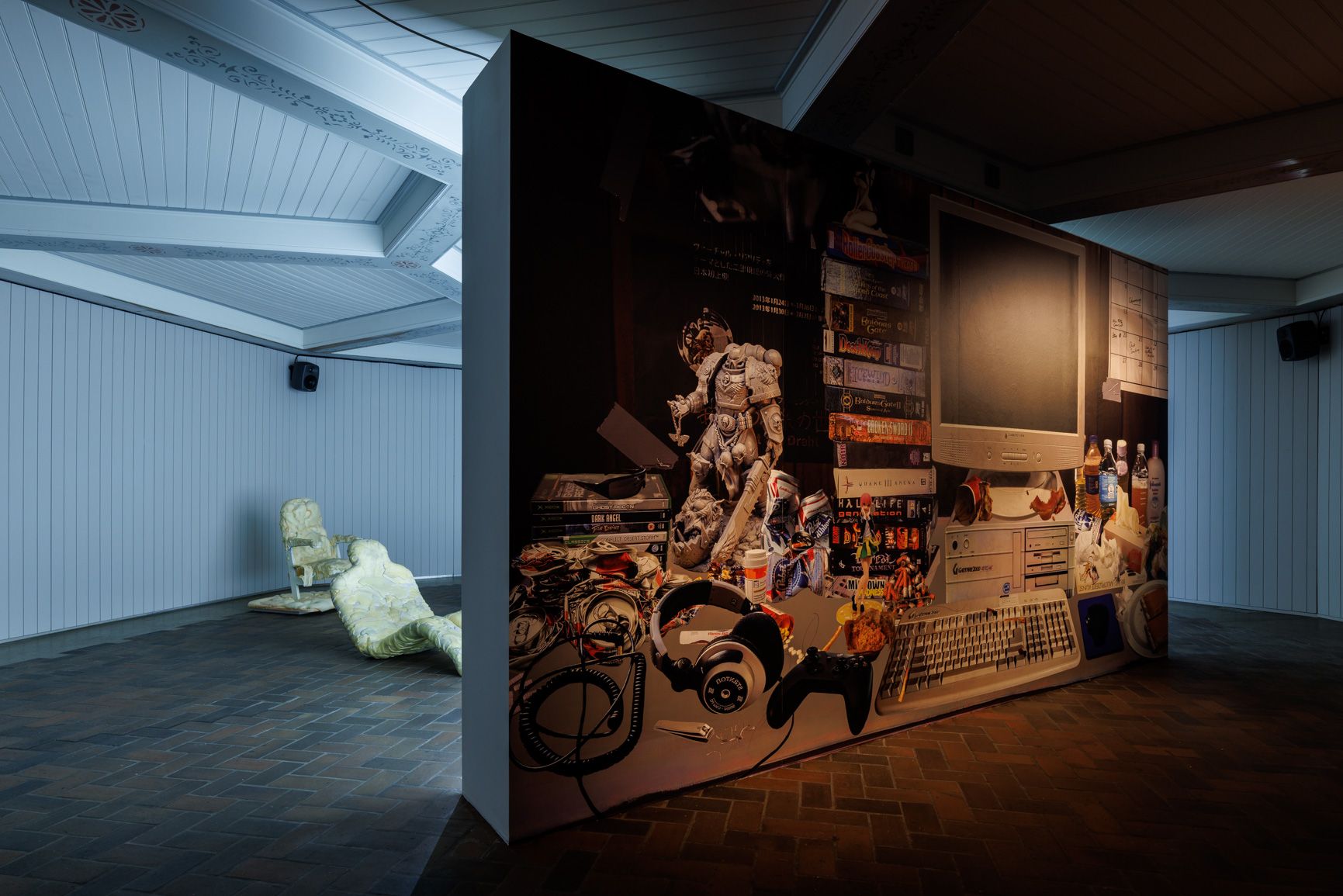
The semantics of eating, ingesting, slurping, and devouring permeate this year’s Art Week. While Ed Atkins hints at a potential food kink, it is unclear if an actual fetish level is reached. Jon Rafman indulges in the topic more directly. Perhaps this can be accredited to his alter ego, Ron Jafman, who seems to have a special interest in vore.
In his solo exhibitions at Schinkel Pavillon and Sprüth Magers, the artist explores desk-cores, cranky acrylic nails, and the story of an overweight pig-nosed gamer with large and wrinkly pores. Rafman’s work is concerned with subcultures on the margins of normcore, but leaves behind the question if he too is a participant. In our interview, Rafman refused to comment on his diet and instead chatted about his “superfan,” a nerd from suburban Turin, and the cringe content on his TikTok “For You” page. His other work, Punctured Sky, is on exhibit at Schinkel Pavillon, featuring a gamer who can also be described as a nerd.
The artist has long been concerned with marginal, weird, and creepy internet fetishes. He seems particularly interested in Vorarephilia, or “vore” – the erotic desire to be consumed by or to consume another creature, usually as a whole. Some food for thought: to swallow an average sized human head, you would need to open your mouth to a diameter of 14 centimeters. Rafman might not be interested in participating in the fetish himself, yet he is an active participant in the fetishization of fetishes and their practitioners. Depicting these fetishes, as an artist, he becomes a fetish subject himself, in the instance of his “superfan.” The “Italian nerd” fetishizes Rafman’s artist persona, and he conversely fetishizes her fetish of him.
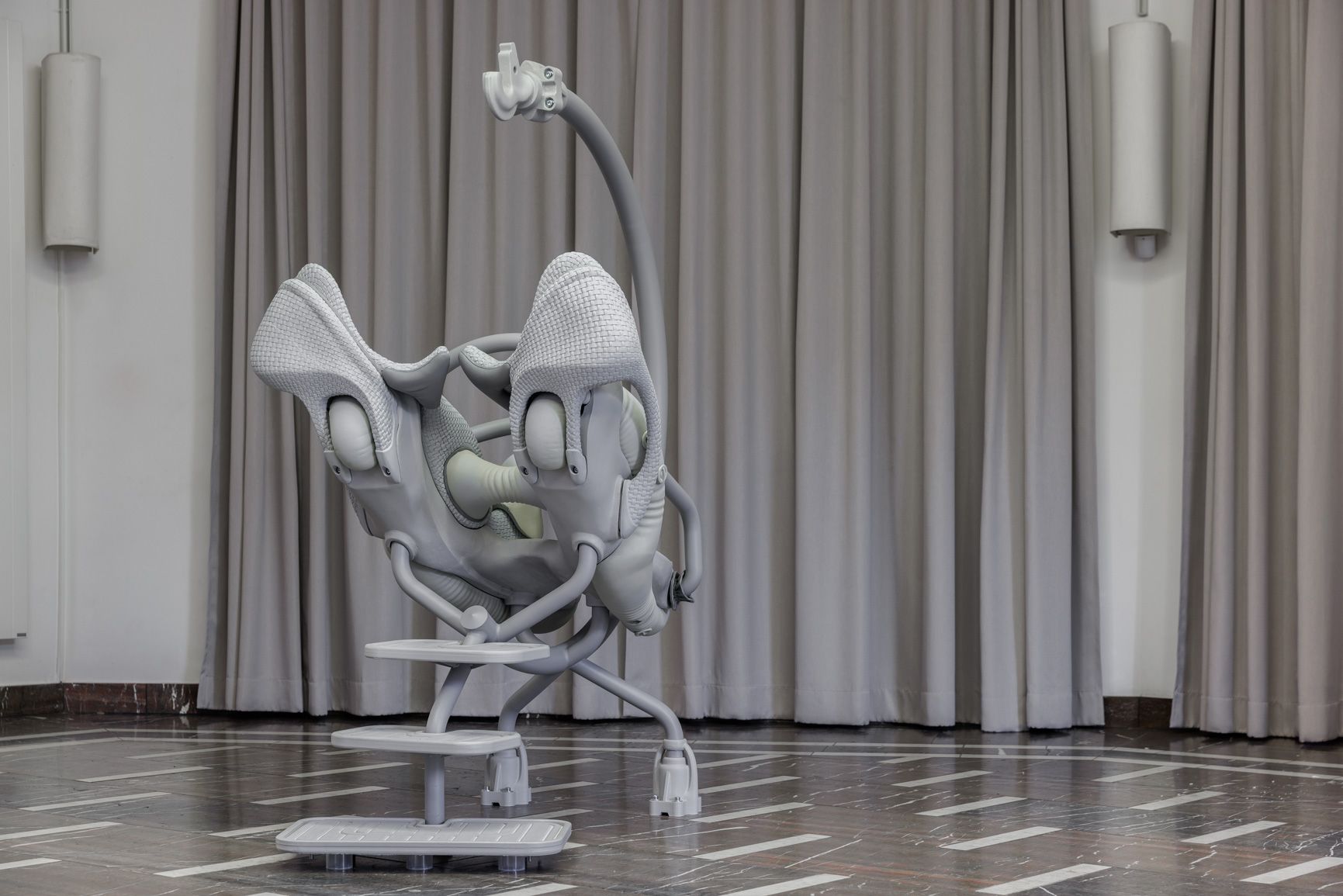
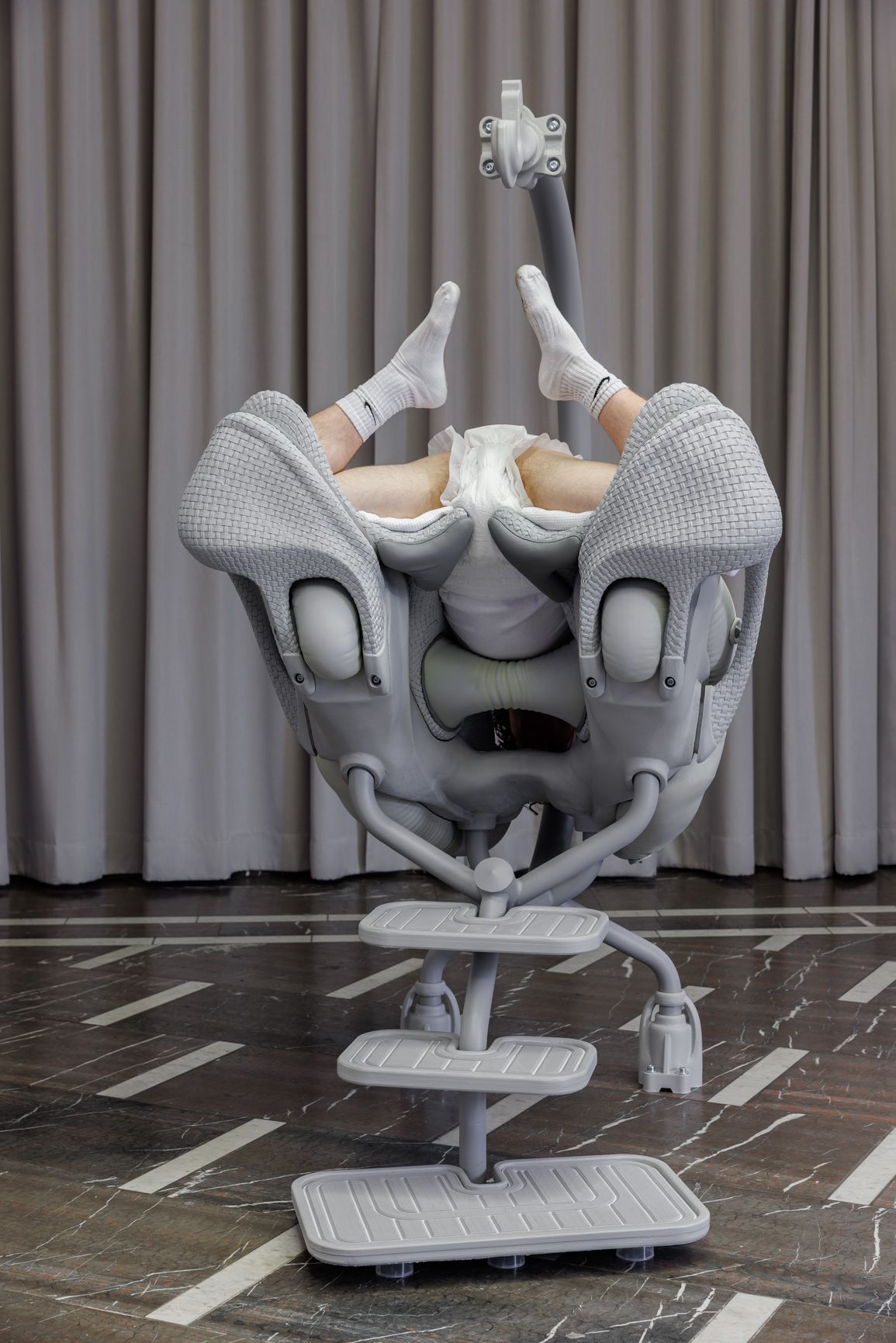
On Schinkel Pavillon’s upper floor, Anna Uddenberg presents a series of otherworldly baby seats, which look like they cradle alien lab infants in her piece “FAKE-ESTATE.” Occasionally, performers dressed in white toddler undergarments enliven the sculptures, alluding to the kink subculture practice of adult-infantilism in which participants gain gratification by returning to a submissive, childlike state. Like Rafman, Uddenberg is interested in fetish practices that deviate from the general population’s desires. An adult person dressed in baby clothing as a sexual practice is certainly an active form of submission. The “Italian nerd” performs a more passive variety of submission that displays a subtle manipulation, demonstrating an underlying form of dominance. Being married to Rafman in The Sims is where she entirely controls him. Perceiving this case from a different perspective, however, illuminates that it is Rafman who is in control. The nerd is so absorbed by him, ingesting him, that she devotes an entire obsessive practice to the artist.
Austin Martin White’s solo show “Last Dance” at Capitain Petzel addresses contrasting fantasies that are marked more by colonial histories than cyber sexual desires, although the territory between colonization, objectification, and eroticization is not that vast. In a short interview, White comments on a world without fantasies:
CLAIRE KORON ELAT: Should we abolish fantasies, as they don’t depict reality, and are therefore non-factual?
AUSTIN MARTIN WHITE: I am not for abolishing anything, especially fantasies. Abolishing fantasy would be akin to abolishing dreaming or creativity. Fantasy is fundamentally human. To rid ourselves of it would be emptying ourselves of our very essence. We would be desireless husks devoid of purpose outside of reproduction.
Reproduction itself might as well be abolished, as sexual desire would lack the space of fantasy to take form.
Don’t you think abolishing fantasy sounds a bit grim? It sounds a little Orwellian. There is undoubtedly also a negative side to fantasy. It reveals our individual vulnerability. In the world we live in right now, fantasy is one of the few ways to psychologically navigate, while it should, of course, be navigated carefully. It makes me wonder how an Amazon fulfillment center worker would respond to the idea of “abolishing fantasy.” I don’t think it would be a positive response.
CKE: What would a world without fantasies look like?
AMW: A world without fantasies would be bleak, if not meaningless. A world without fantasies would be a world without desire, a world without invention, a world without transcendence, and certainly a world without escape.
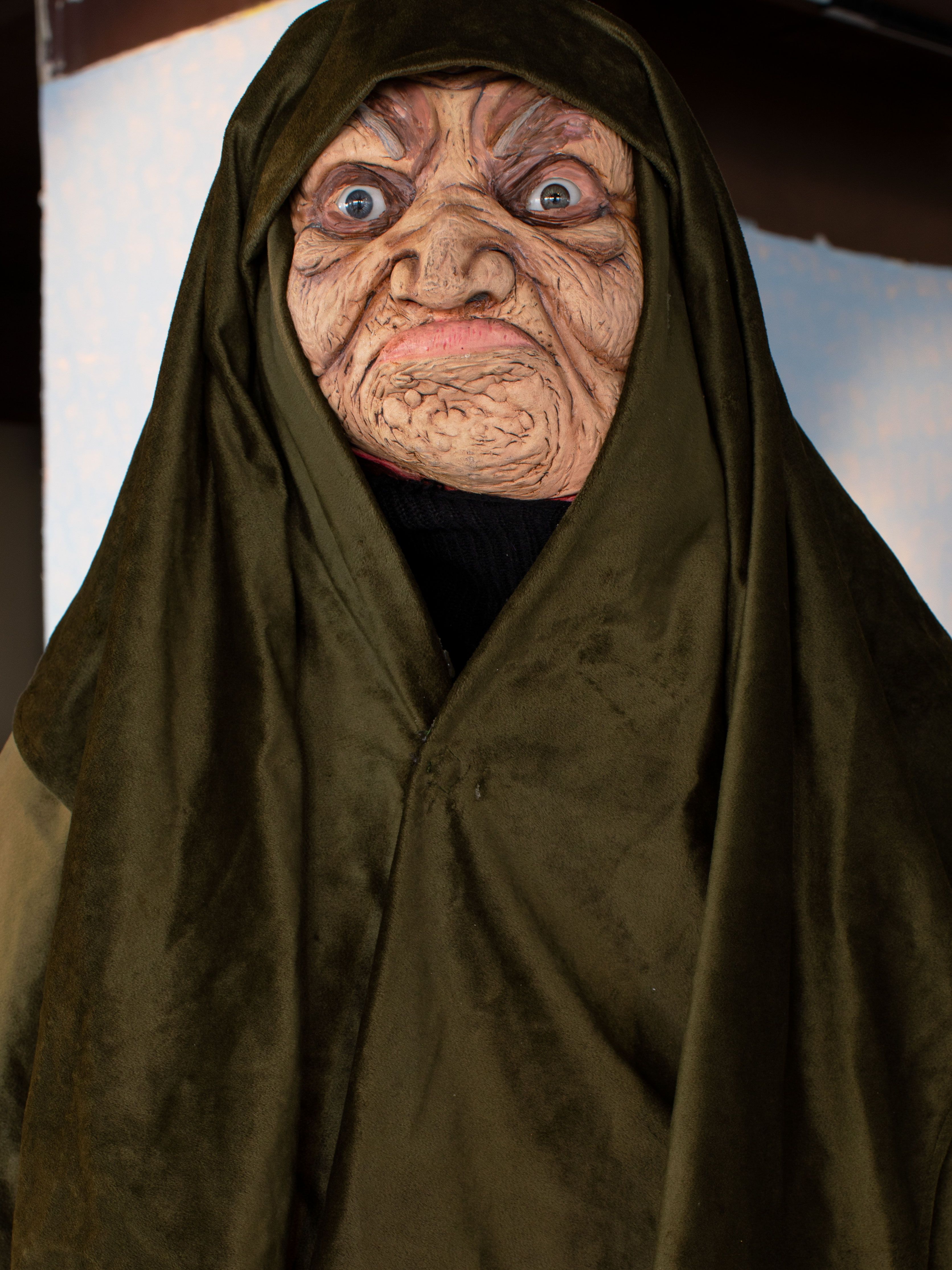
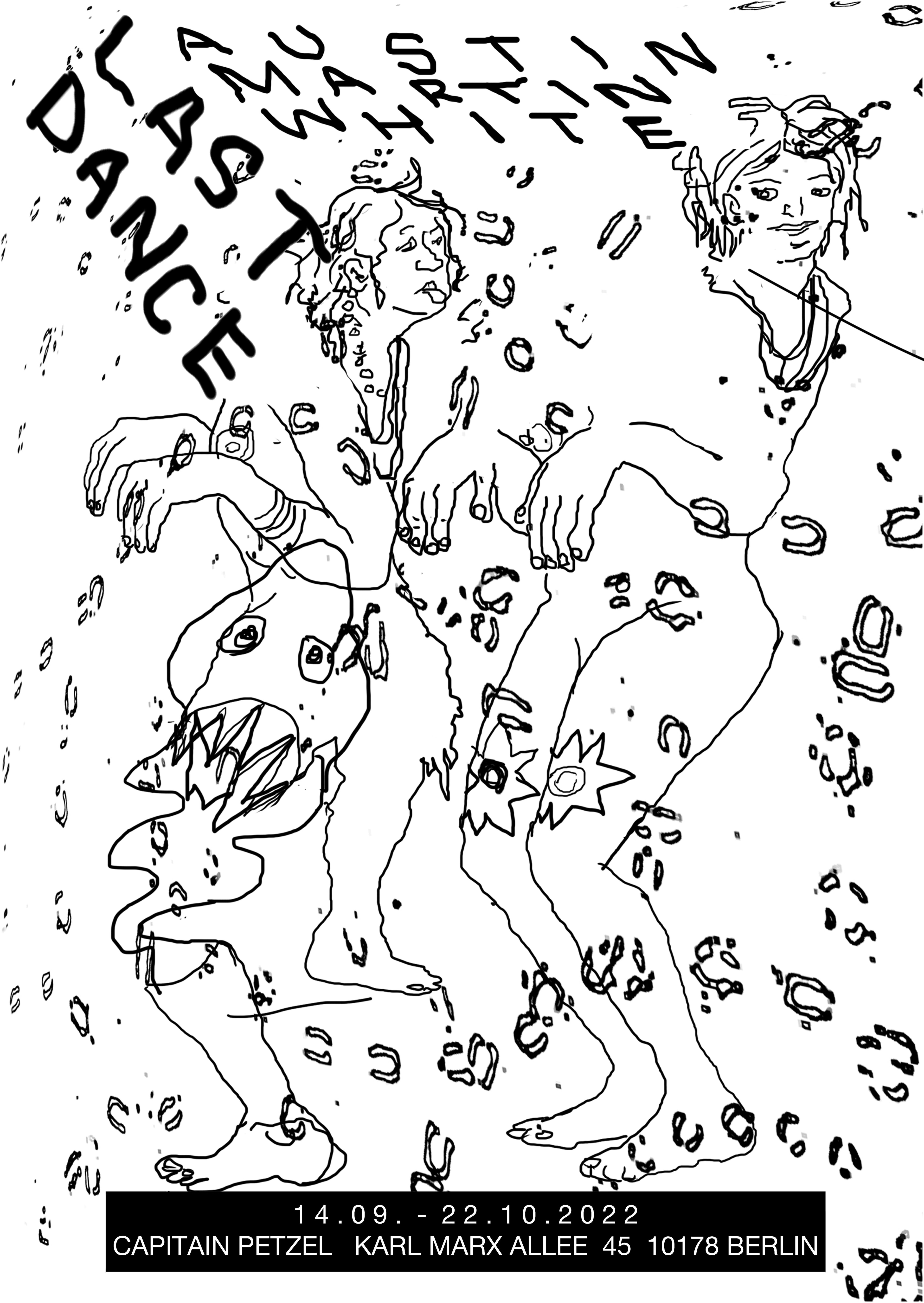
The rooms of Heidi, Berlin have been transformed into a physical IRL fantasy world. Marnie Weber’s show “Sweet Ravaging Time” mediates the passage of time and transformation through video, collage, painting, sculpture, props, and mannequins, by building a scenery that appears ripped-out from the pages of Lewis Caroll’s Alice's Adventures in Wonderland. In the book, Alice has a recurrent desire for the consumption of both food and words. If she also has a vore fetish, remains unknown. The various mannequins populating Heidi’s exhibition space are dressed in peculiar garments, such as a jacket constructed with white feathers and cottagecore dresses bedecked with yellowed lace. The show is reminiscent of Marni FW-22, an ode to the handmade that has been remodeled as a “Berlin” version. This Berlin version is instead a reference to your local Pick'n'Weight store with the same lingering smell — a mixture of nursing home, crushed bones, and clothes that have not been washed in ten years. This is also the fragrance for Heidi’s Weber show, a convoluted fairy tale labyrinth where a crone might appear and converse with you at any given moment.
Mona Hatoum leaves more space for the viewer in her exhibition “all of a quiver” at Kindl Zentrum für zeitgenössische Kunst. The colossal room of the historic brewery has been left empty, apart from a vast minimalist architectural structure in the center. The construction is kinetic and moves in different directions, giving the illusion of collapsing at any time. Hatoum thereby abstractly references issues of dislocation, impermanence, and the perception of spatiality.
Tom Burr similarly disrupts space in a minimalist way. In his show “Compressions” at Galerie Neu, the artist exhibits the spatial sculpture CONFIGURATION (NEXT) GENERATION (2022), consisting of four cubicles, each hosting a single metal bed. Unlike Atkins’s, these beds are distinctly non-breathing. Alongside the sculptural installation is a series of wall works. A jarring orange fabric is stamped onto the base, a large wooden surface, of Burr’s “Atlas” series, evocative of construction worker vests. Coincidentally, one visitor was wearing a vest underneath his coat in the same shade of orange. In a conversation between the artist and the curatorial duo Pierre-Alexandre Mateos and Charles Teyssou, hosted at Neu during Art Week, Burr reveals the undercurrents of orange — an ode to the bodybuilder Charles Atlas.
On Sunday, September 18, 2022, the last evening of Art Week, I ordered a premium thick shake from Dominos at 11pm, which would have aptly finished off the week of ingurgitating art, food, and all kinds of objects and creatures. It’s the kind of shake that creeps down your throat as a satisfying, icy whole. It never arrived.
Credits
- Author: Claire Koron Elat
Related Content
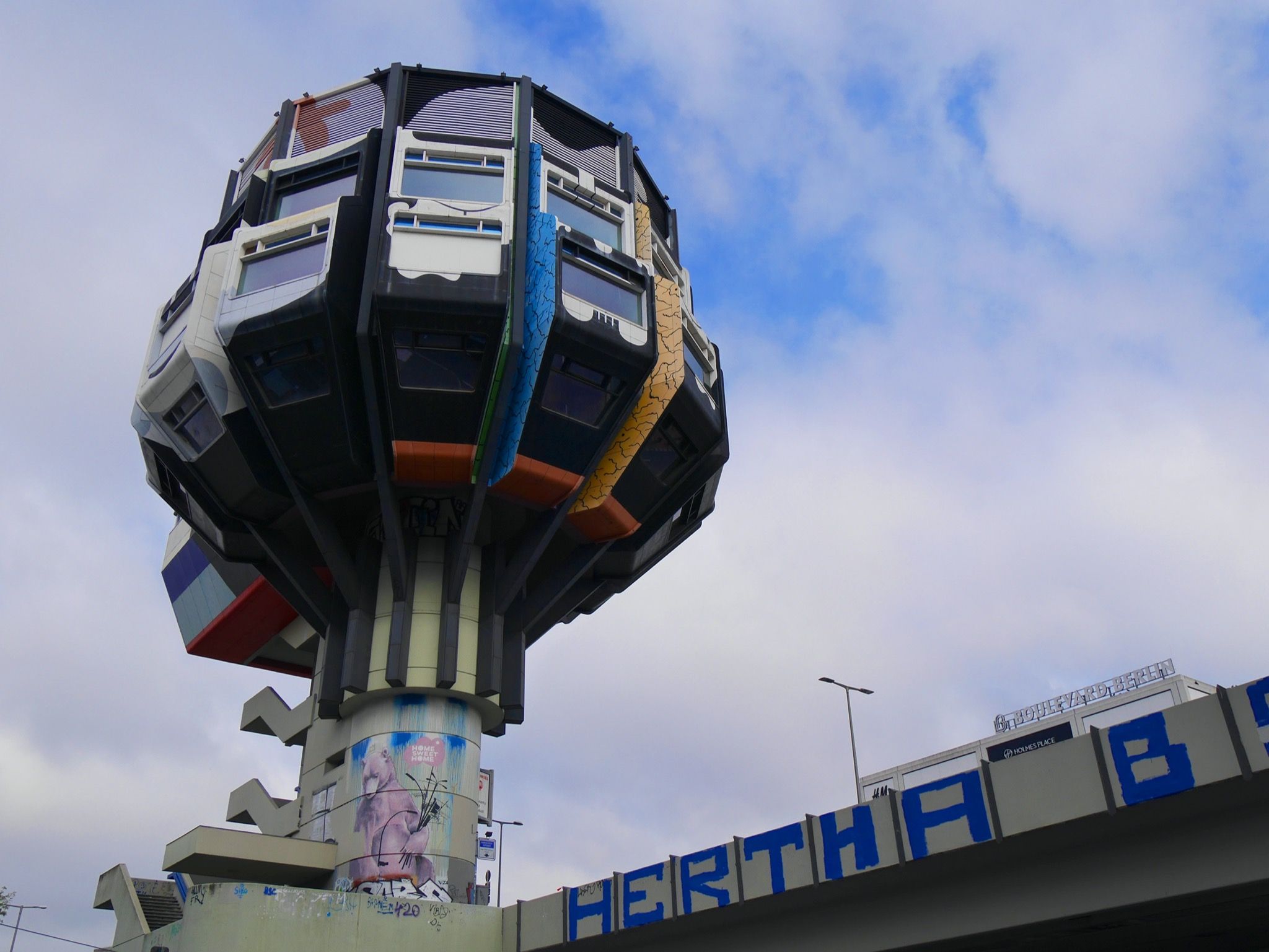
Disappering Berlin 2021
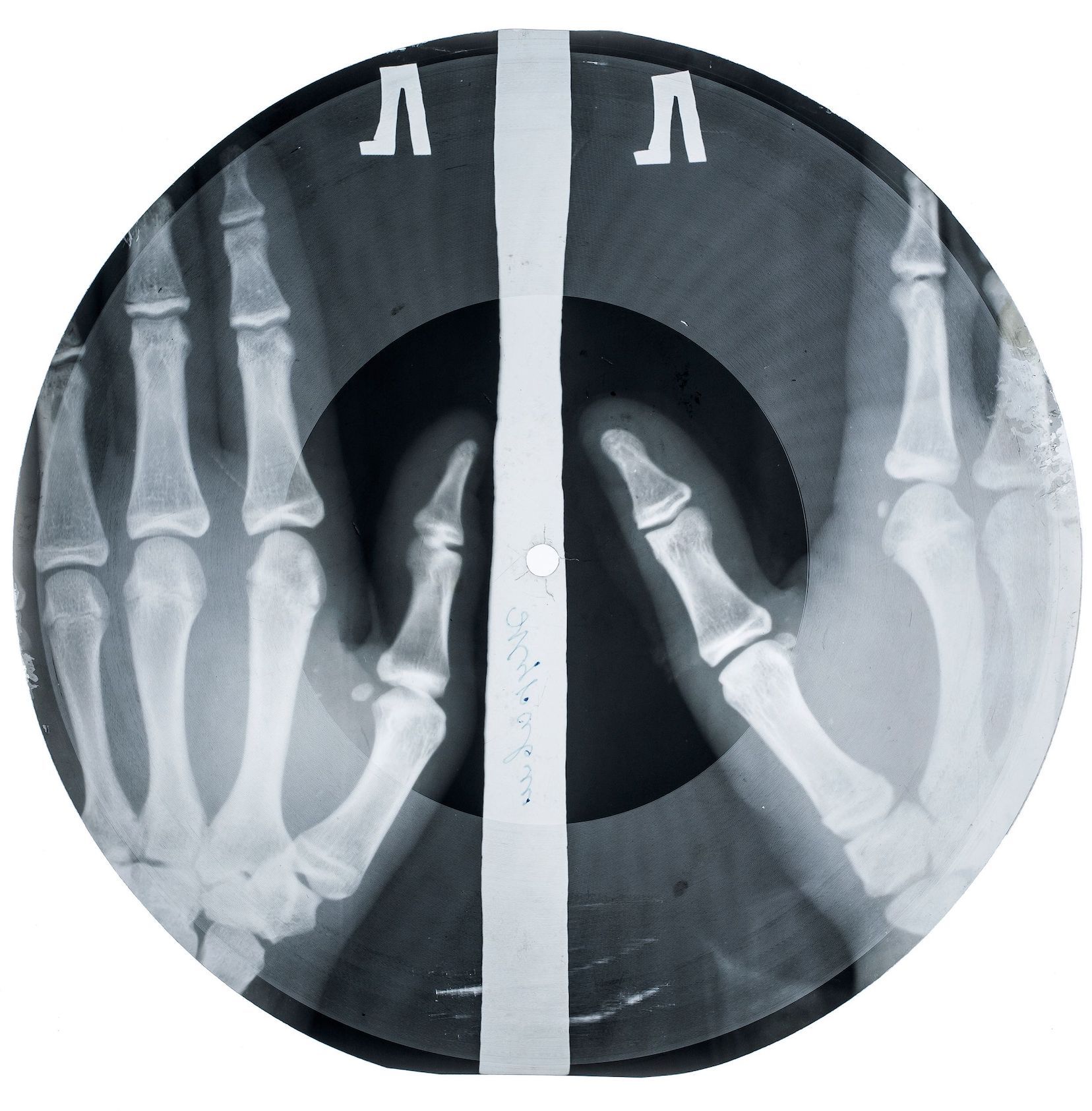
X-RAY AUDIO: The “Bone Music” of the Soviet Union
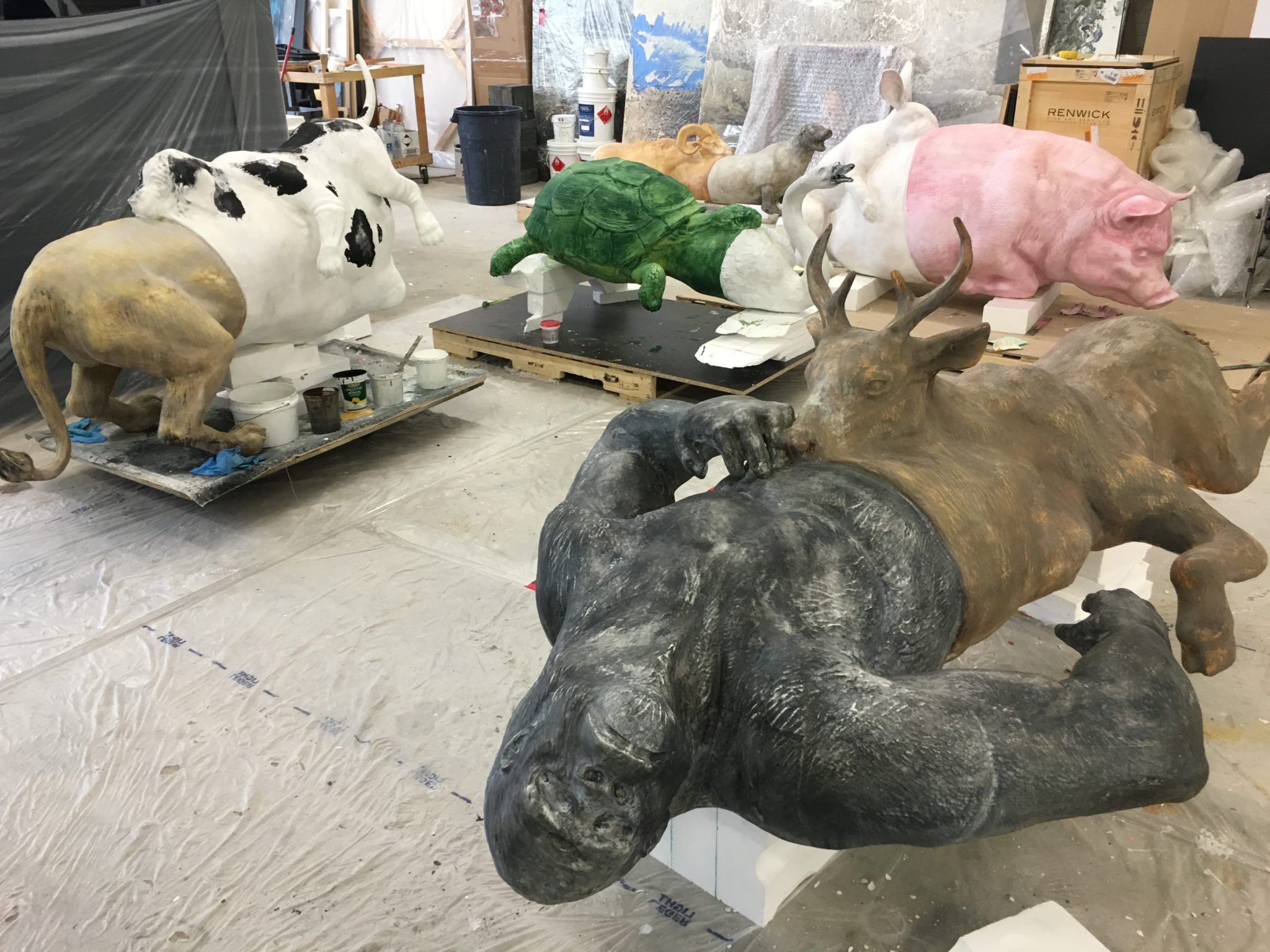
YEAR OF THE PIG: JON RAFMAN and the World’s Hungriest Fetish
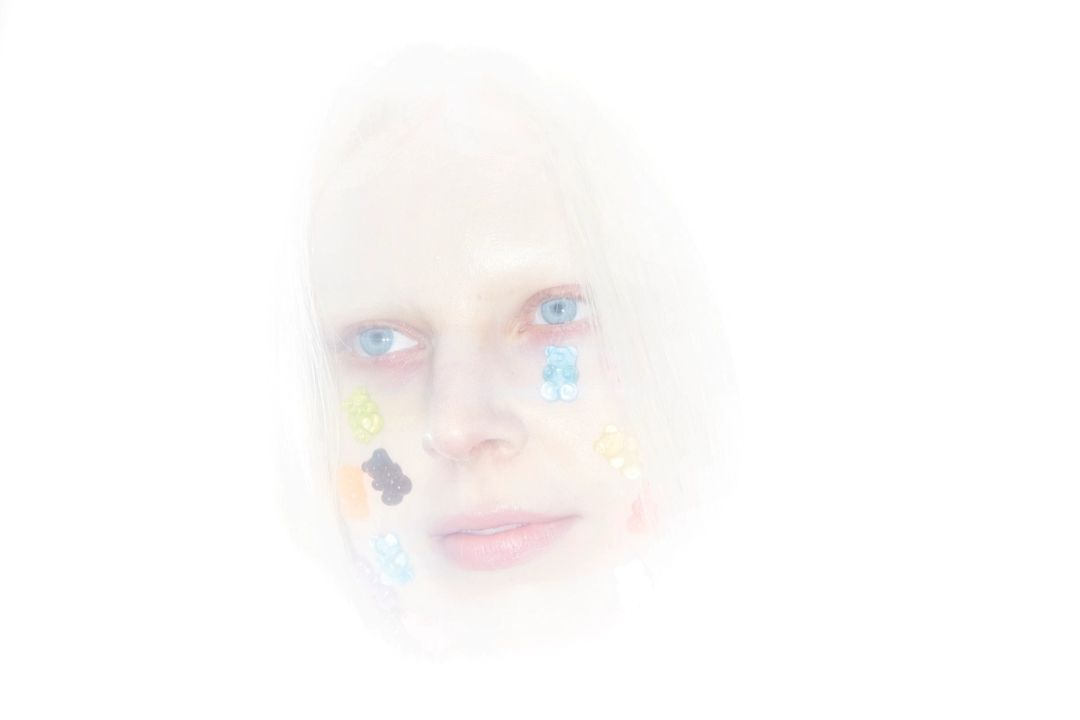
SKITTLES
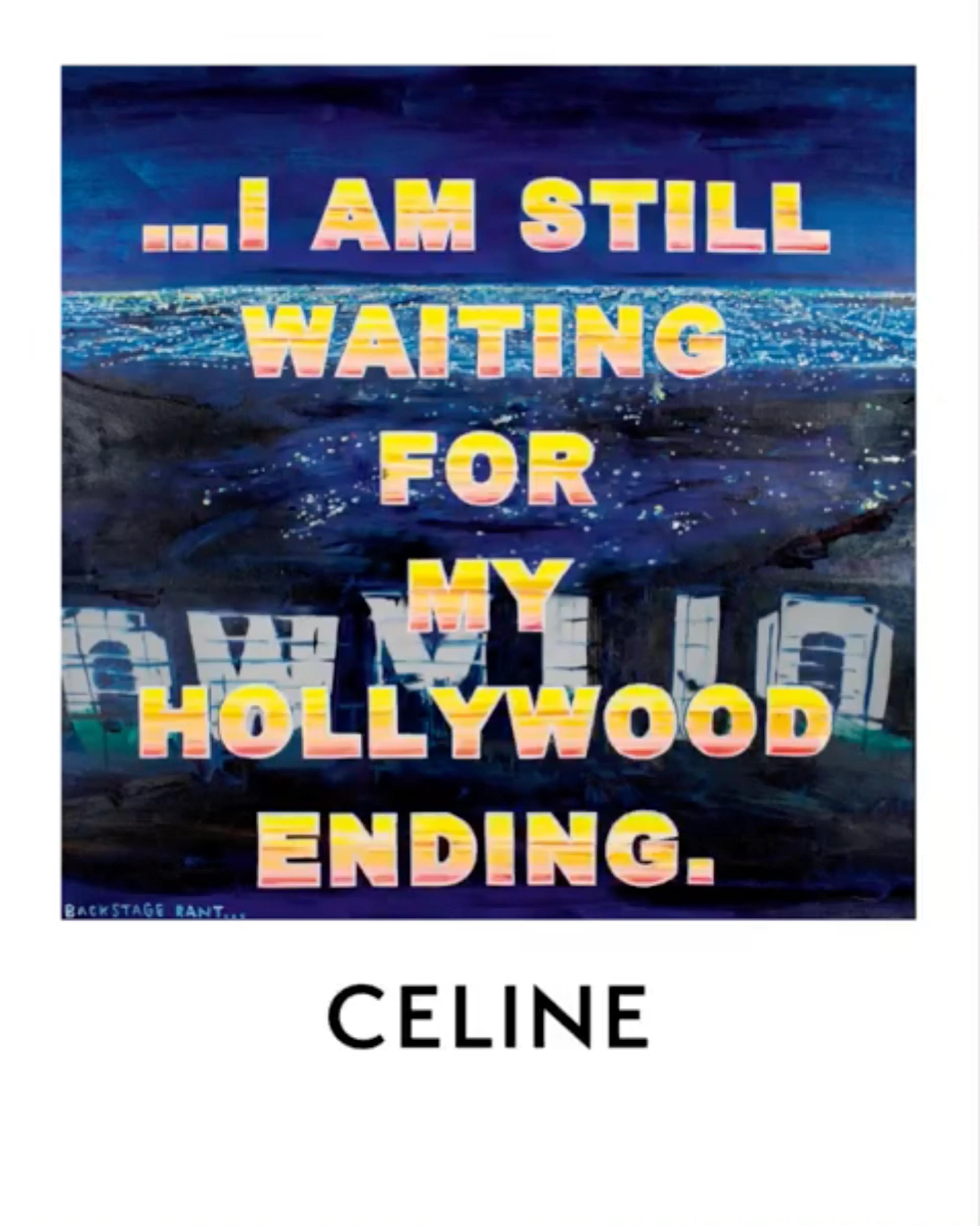
There Is No Irony Here: Artist DAVID KRAMER on humor, Hedi Slimane, and adapting his work for CELINE
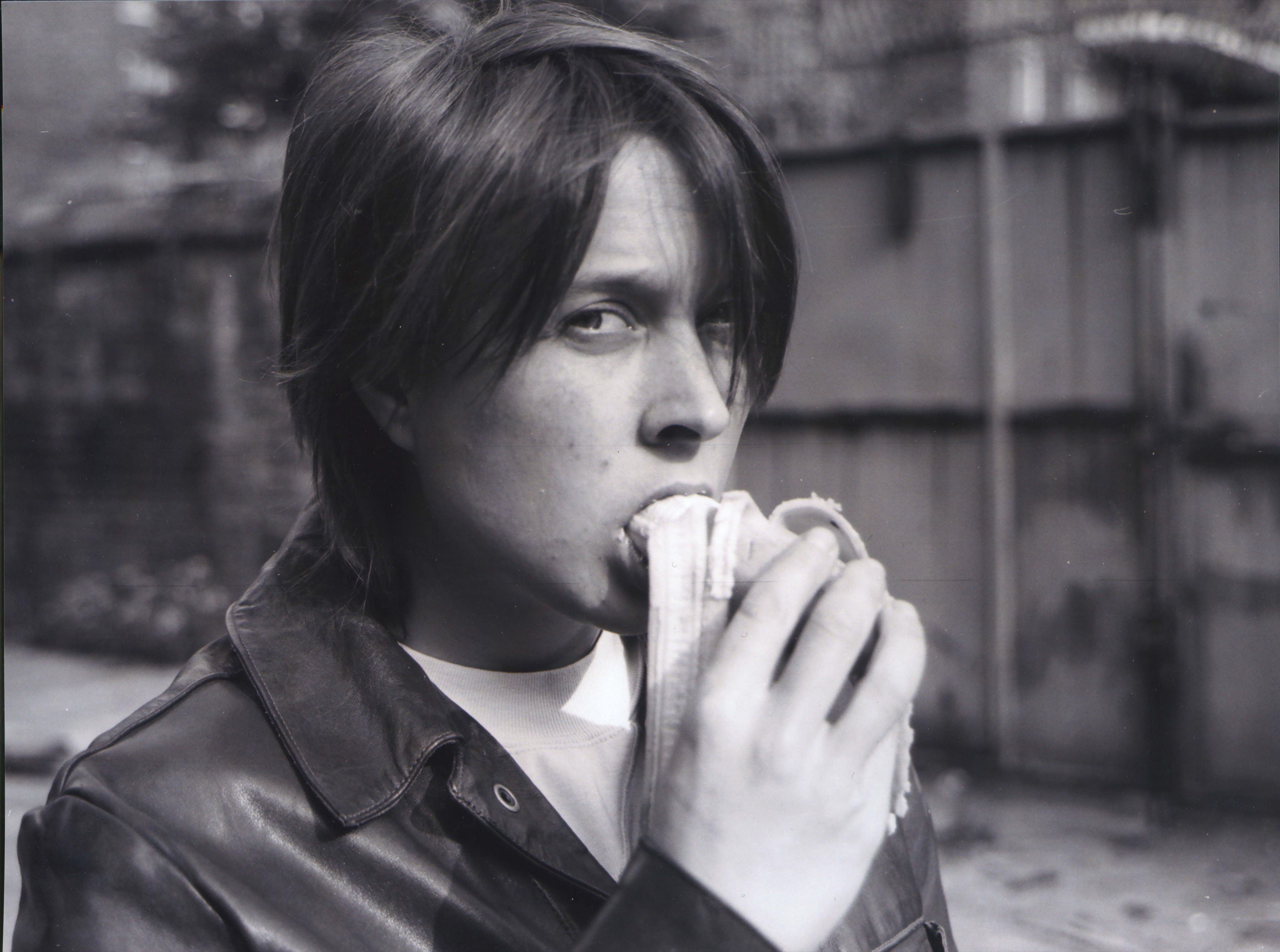
Sarah Lucas to Massimiliano Gioni: “I Didn’t Want a Boring Life”
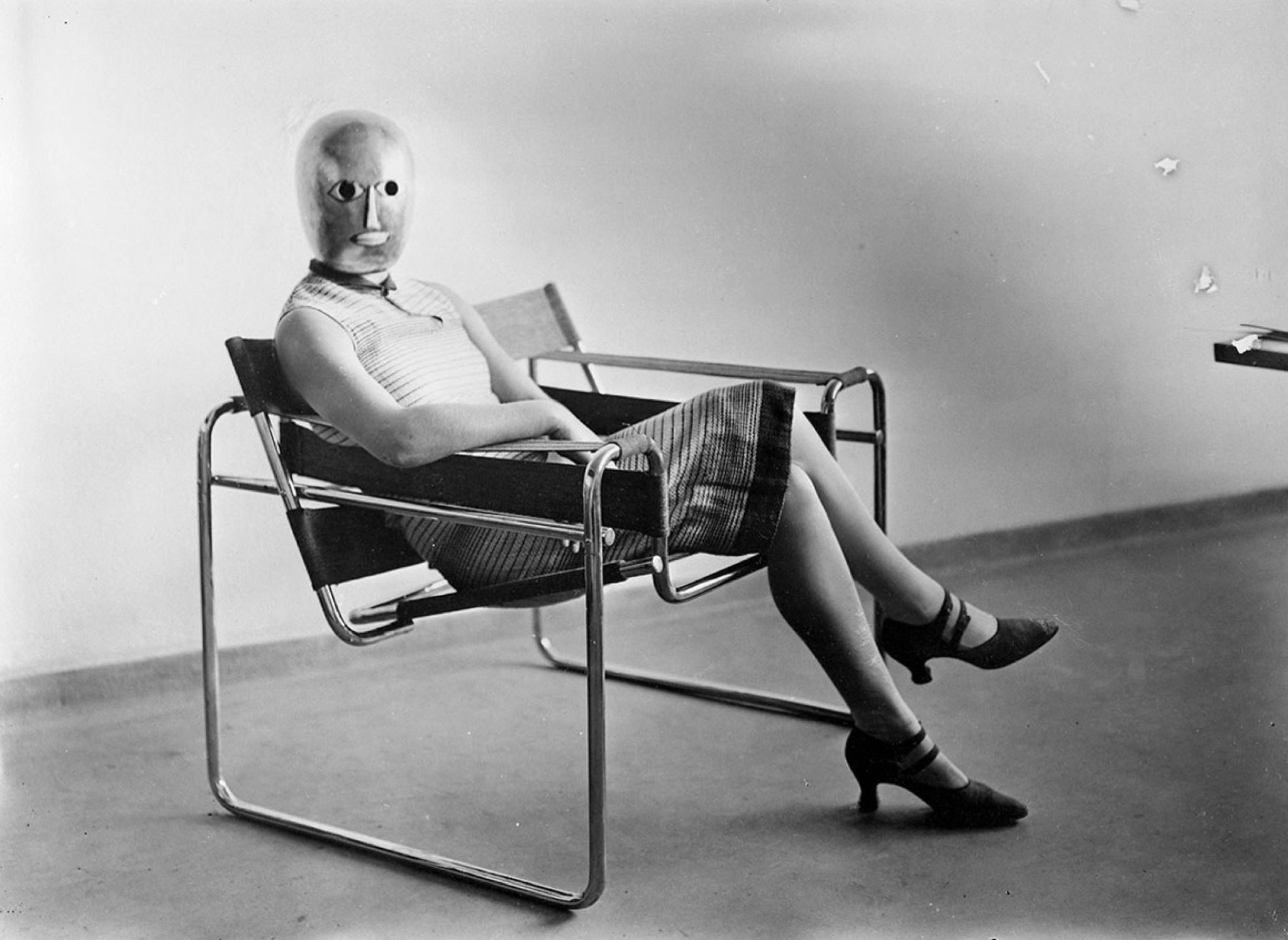
BAUHAUS 100: Eulogy for a Perversion
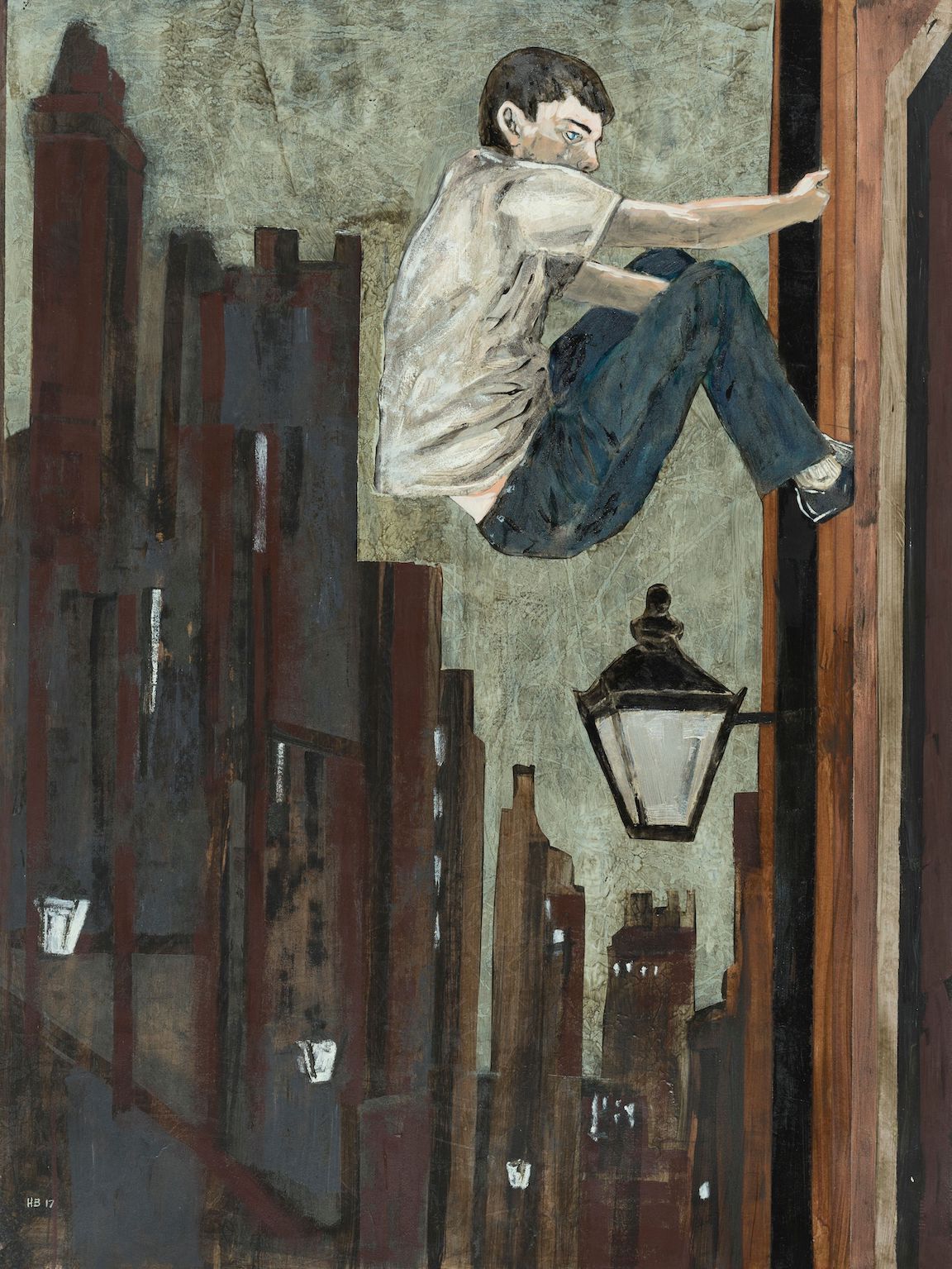
Paranormal Dandies, Sex with Buildings: HERNAN BAS in Cambridge
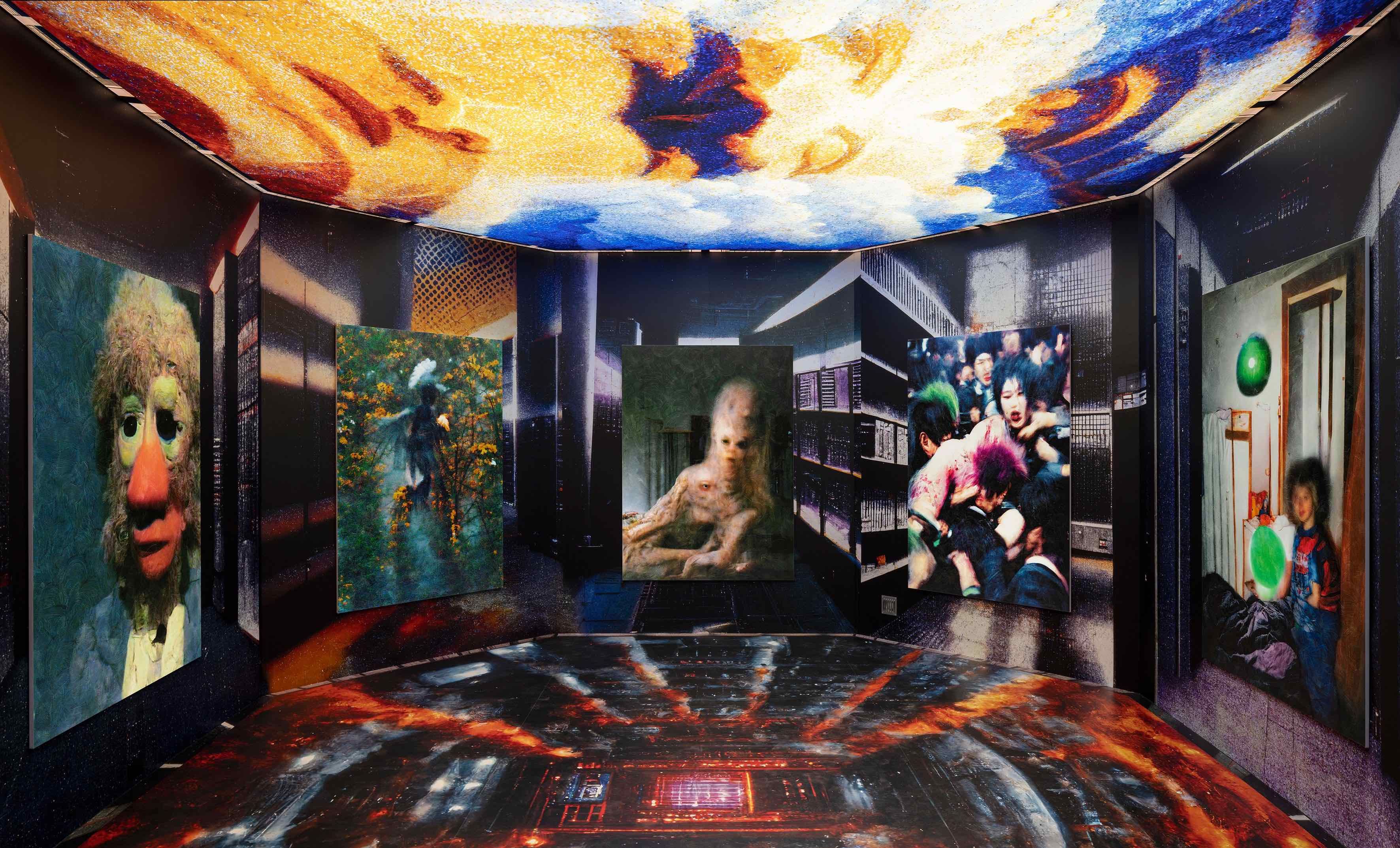
Finding Romance in the Grotesque: JON RAFMAN